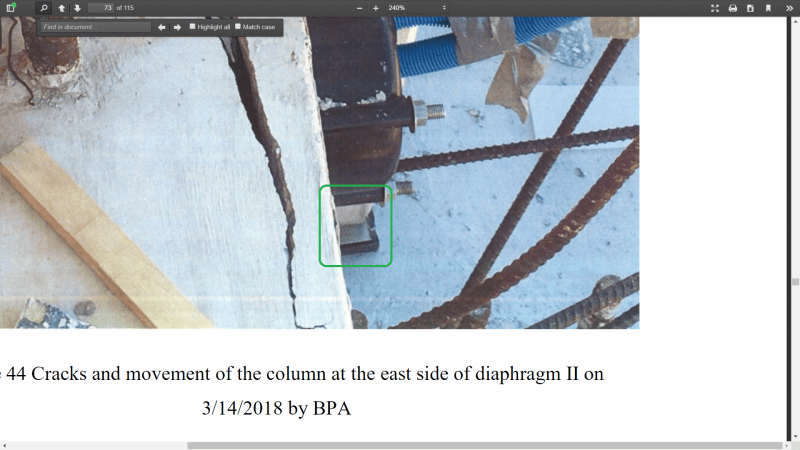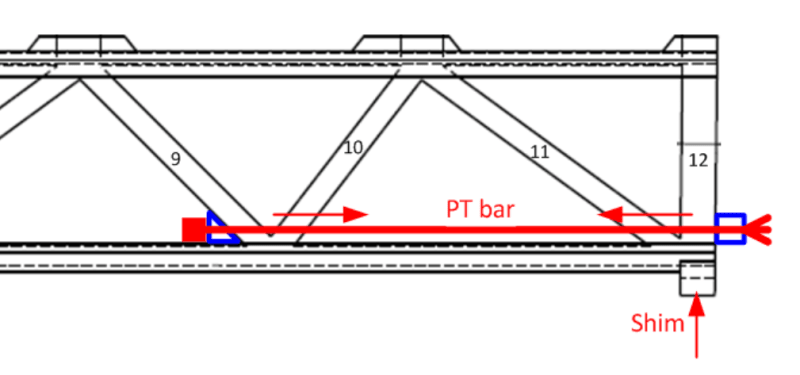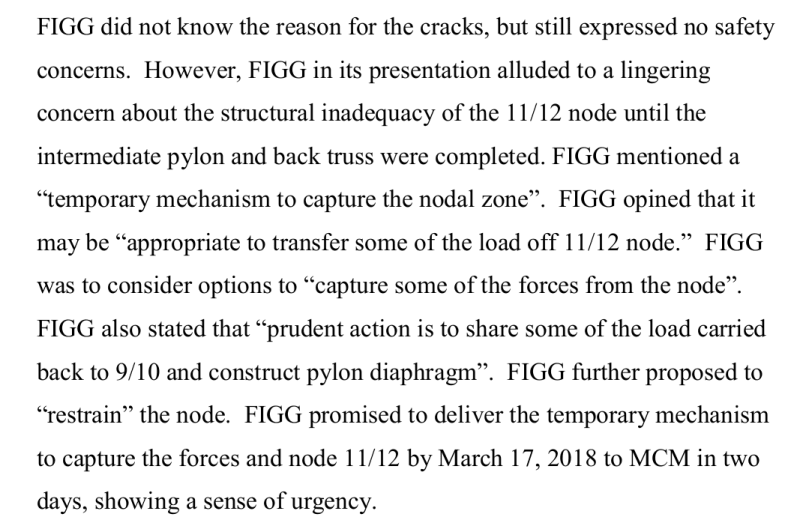Just some information for the curious. Barnhart's contract was for $435,160.00. The charges for delay to Barnhart's execution of the work were: $24,000 to mobilize & demobilize personnel & $72,000/week for equipment on Standby.
It is pretty clear in video posted by MikeW7 (Electrical) to his Whirled Gnus YouTube page that cracking started very early in the detensioning of member 11. Video:
Move part 4 - N view at the 1:40 mark. People start inspecting the 11/12 node and the canopy crew stops work for a time.
The tensioning sequence for members 2 & 11 both start with the longer & lower PT bar. Wouldn't detensioning be the reverse order? The OSHA report states VSL had completed the final load on the upper bar & was just finishing apply the final load to the lower PT bar, when the collapse took place. This is the
opposite to the tensioning sequence in the plans. It is worth noting that the schedule for the PT tensioning of member 2 & 11 both have "A" - "B" designations. In member 2, "A" is the longer PT bar & in member 11, "B" is the longer PT bar. VSL should have color coded these bars in the field to eliminate any confusion. In what order did VSL originally tension & detension members 2 & 11? (EDIT: Perhaps I'm wrong. Maybe they started & finished with the lower PT bar.)
On an all together different tack, it is really troubling that in all the years & money that went into this project and the projections of future pedestrian use and how this was a project hand-in-hand with the City of Sweetwater, with the goal of pedestrian SAFETY, along with the glorification of the restoration BROTHERS TO THE RESCUE MEMORIAL PLAZA (old foot bridge across canal); the City of Sweetwater has not spent one dime on pedestrian safety. There is not one marked crosswalk, from one side of 109th Ave. to the other for blocks. You would think that with all the construction that was planned and with
STUDENTS living in the existing 109 Tower, that the supposed primary goal of "pedestrian safety" in a construction zone, would have been a top priority. The handicap access to the BROTHERS TO THE RESCUE MEMORIAL PLAZA hasn't changed since 2011. It is as if, the moment the FIU pedestrian bridge moved from one side of 109th ave to the other, the City of Sweetwater was off the hook to do any improvements. It all speaks to a ridiculous degree of Hypocrisy from the TIGER Grant to the point of Collapse by the Owners, FIU & Sweetwater.



